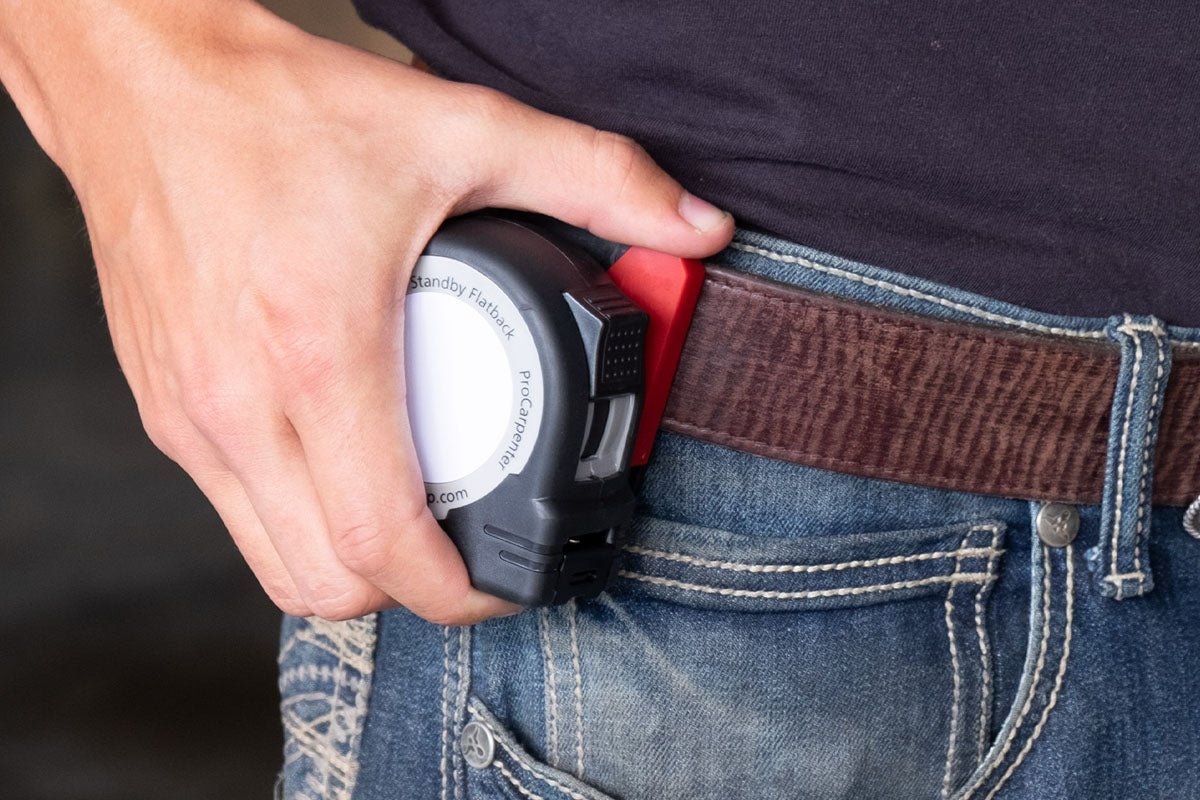FastCap’s ProCarpenter FlatBack tapes bring a clever twist to traditional measuring. Jonathan Salisbury explores how their flat design, True32 markings, and smart features make accurate measuring simpler and faster.
The Woodworker & Good Woodworking
Where to start? There’s so much to choose from! The first tools I unpacked were two FlatBack measuring tapes from FastCap – the ProCarpenter Metric/Standard and True32 Metric Reverse. These look very similar to standard retractable tapes, except that when unreeled they lie totally flat against the surface. This allows them to be more easily used on curved surfaces and also rolled around tubes, barrels and other similar profiles to find circumferences.
Both tapes feature clear markings, with white backgrounds and black and red numbers. The 5m Metric Reverse is in millimetres and can be read either way up; if you’re into imperial measurements, the 16ft-long Metric/Standard – best used from left to right, otherwise the numbers are upside down, although this isn’t a major problem – has feet and inches divided into halves, quarters, eighths and sixteenths, up to 16ft 5in, or 197in. Metric measurements are continuous, with no metre markers, and go up to 5,004mm. Both feature small dots at 32mm intervals; these remained a mystery until I discovered they’re actually for the True32 system, which was developed to standardise layout for mass-produced cabinets, such as the spacing of shelf support holes, positioning of drawers, height of units, etc. How did I ever manage to build furniture without knowing that?! The Metric Reverse tape goes one further to include annotations at key points, such as ‘True32 Base Cabinet Height’, ‘True32 Upper Cabinet Bottom Position’ and my personal favourite, ‘True32 Top of Upper Position for 1,024mm Upper Cabinet’.
Three other notable features of both tapes include a dual locking system, with standard-style push-down catch and smaller button underneath to keep the tape in place only while pressed; a white disc on the side of the body and tape surface, which can be written on with pencil and wiped-clean afterwards; and last but not least, a built-in pencil sharpener.
I was a bit sceptical about these measures at first; the flat tape can’t be held straight in mid-air – as with the curved variety – to measure up to walls or ceilings, for example, and the hook doesn’t move, so internal measurements are 1mm out at the origin and a further 76mm (3in) needs to be added for the base. Although nice to use, their flexibility over longer distances can be a bit frustrating, especially when the hook slips off the end of whatever it is you’re measuring, and because of the hook, it’s not always possible to see the exact circumference when measuring around objects. Having said that, a tape that lies flat provides advantages when aligning joints, setting up a square to transfer lines onto wood, or marking points for drilling.
The Verdict
- Pros: Lies flat so easier to use with other measuring tools; high contrast markings makes it easy to read; write on/wipe clean with a pencil
- Cons: High flexibility makes measuring inside rooms more difficult
- Performance Rating: 4 out of 5
- Value Rating: 5 out of 5

